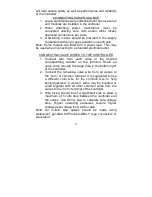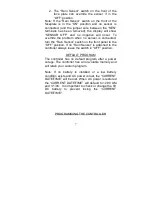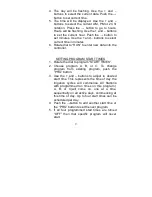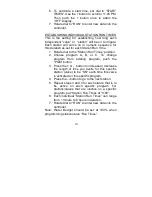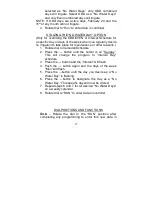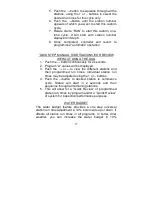
4
will help assure safety as well as performance and reliability
of the controller.
CONNECTING POWER SOURCE
1. Leave electrical power unattached until all valve wires
and modules are installed in the controller.
2. When attaching power, transformer must be
connected utilizing wire nuts and/or other locally
approved connections per code.
3. A switching means should be provided in the supply
conductors with an air gap separation in each pole
Note: Some models are fitted with a power lead. This may
be used when connecting to a standard electrical outlet.
CONNECTING VALVE WIRES TO THE CONTROLLER
1. Connect wire from each valve to the desired
corresponding number on the terminal. Route all
valve wires through the large hole in the bottom right
of the controller.
2. Connect the remaining valve wire from all valves to
the “com” or common terminal. It is suggested to use
a different color wire for the common wire to help
keep organized. “Common” wires may be bundled or
wired together with all other common wires from the
valves to the “Com” terminal of the controller.
3. Wire sizing should be of a significant size to allow a
maximum of 5 volts drop between the controller and
the valves. Use Ohm’s Law to calculate wire voltage
drop. Higher operating pressures require higher
voltage (less voltage loss) at the valve.
Note: All in-field wire splices should be made using
waterproof, gel-filled Hit Products DBC-Y type connectors or
equivalent.




